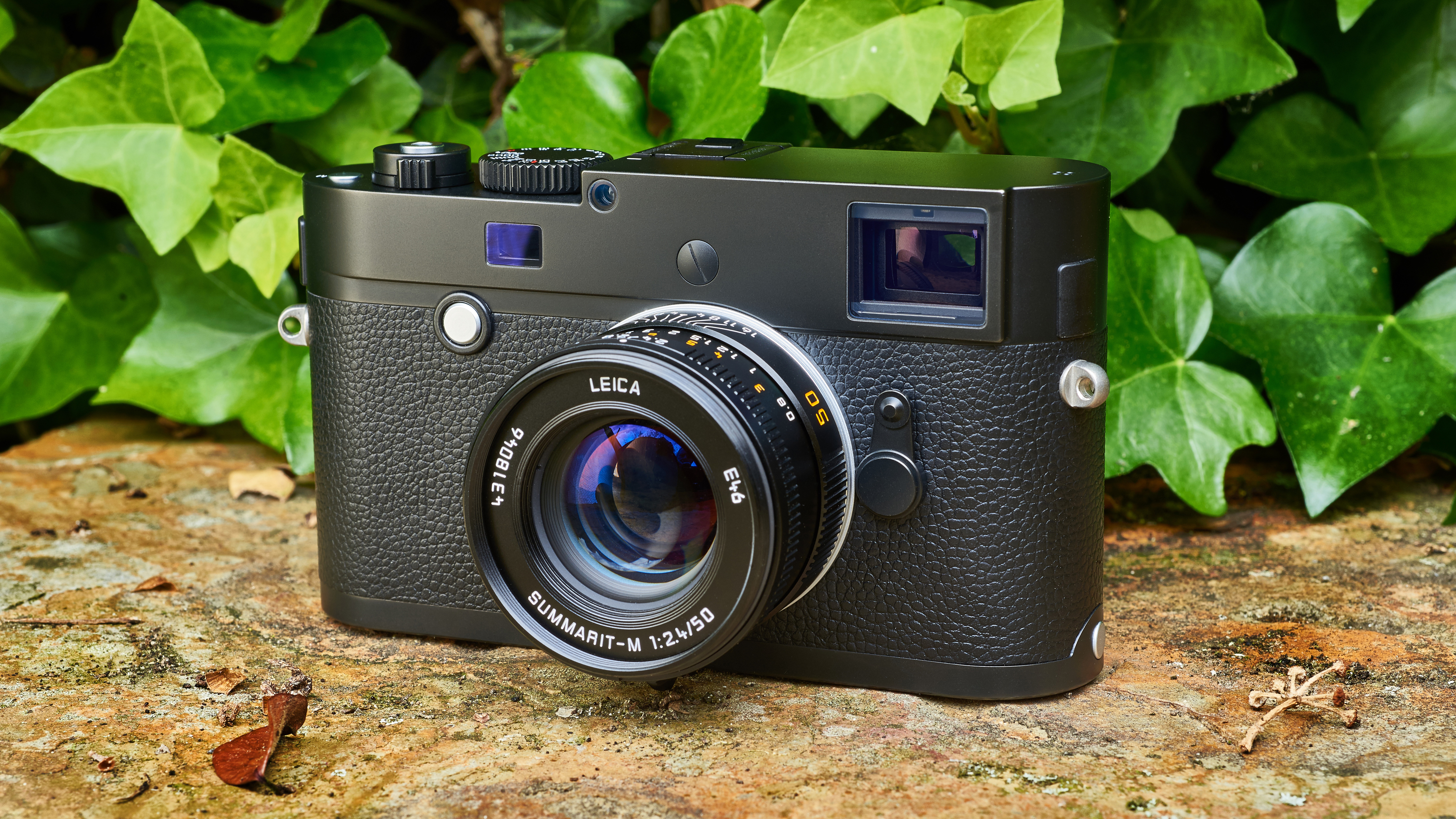Why you can trust TechRadar
This is a test of the camera's noise levels. The higher the signal to noise ratio, the greater the difference in strength between the real image data and random background noise, so the 'cleaner' the image will look. The higher the signal to noise ratio, the better.
Leica M Monochrom (Typ 246) signal to noise ratio charts
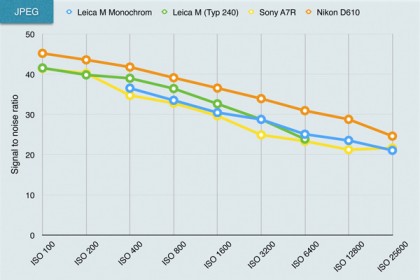
JPEG signal to noise ratio analysis: The Monochrom's signal to noise ratio is not especially good compared to its rivals, which means you will see a little more noise in its JPEG images. However, the kind of noise it produces is more pleasing and 'natural-looking'.
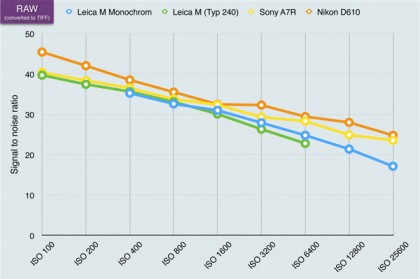
Raw (converted to TIFF) signal to noise ratio analysis: The noise levels in the raw files are much closer, and although the Nikon D61o is visibly better in the low and high ISO ranges, the Monochrom, Sony A7R and Leica M240 are very close.
Sample Leica M Monochrom (Typ 246) ISO test results
The signal to noise ratio charts use laboratory test equipment, but we also shoot a real-world scene to get a visual indication of the camera's noise levels across the ISO range. The right side of the scene is darkened deliberately because this makes noise more obvious.
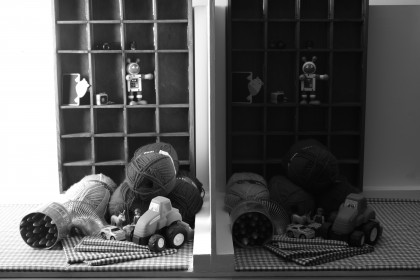
ISO 320: Click here for a full-size version.
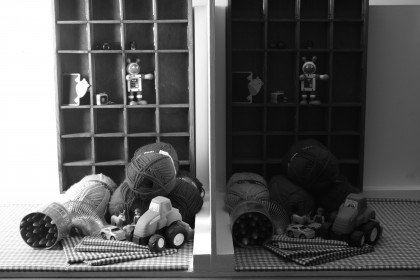
ISO 6400: Click here for a full size version.
